Looking for a refreshing and tropical way to satisfy your cravings? Look no further than a delightful tropical fruit salad.
Bursting with juicy flavors, vibrant colors, and a hint of zesty tang, this dish is a true taste of paradise. Get ready to embark on a mouthwatering journey to the tropics with this delightful fruit salad.

Some links in this article are affiliate links that may earn me a commission if I purchase through them.
All summer long, I entertain. Whether I make homemade marshmallow fluff for s’mores stuffed strawberries or a trifle with butterscotch blondies and vanilla pudding (with strawberry lemonade preserves and blueberries), I love to find fun treats everyone enjoys.
Why you’ll love this tropical fruit salad
This tropical fruit salad gets jazzed up with a little glaze that wakes the fruit up just a little bit and makes it more unique than just throwing some fruit together. Thankfully it’s still quick and easy to make.
This fruit salad can be enjoyed on its own as a light and healthy snack, served as a side dish with your favorite meal, or even as a topping for desserts like ice cream or yogurt.
How to choose a ripe pineapple
Look for a pineapple that has a vibrant and golden color on the exterior. Avoid pineapples that have green or brown patches, as these can indicate underripe or overripe fruit, respectively.
The skin should feel firm but yield slightly to gentle pressure when squeezed.
Next, give the pineapple a whiff. A ripe pineapple should have a sweet and fragrant aroma, reminiscent of tropical paradise.
If it smells overly sour or fermented, it may be an indication of an overripe fruit. If you can’t smell anything, it’s likely not ripe yet.
Lastly, examine the crown of the pineapple. A pineapple with healthy, green leaves is more likely to be fresh and ripe. If the leaves are dry, wilted, or easily plucked, it could be a sign that the pineapple is past its prime.
If you can’t find fresh pineapple, you can substitute frozen pineapple in its place, although it won’t have quite the same firm texture of fresh pineapple once it thaws. This is a much better choice than canned pineapple.
How to choose a ripe mango
Find a mango with vibrant skin color. Depending on the variety, it may be yellow, red, orange, or a combination.
The skin should feel slightly soft to the touch, but not overly mushy. Avoid mangos with blemishes, bruises, or wrinkled skin, as these are signs of an overripe or damaged fruit.
The fragrance of mango is a reliable indicator of its ripeness. Give it a gentle sniff near the stem end – a sweet, tropical aroma means the mango is ripe and ready to eat.
Gently squeeze the mango. A ripe mango will yield slightly under gentle pressure, indicating its juiciness and tenderness. However, if it feels too soft or squishy, it may be overripe.
Mangoes don’t go bad quite as quickly as avocados, but they do have a relatively short shelf life, so be sure to use them within a couple days of purchasing them.
Why use a slightly green banana
While it may seem counterintuitive, use bananas that are more green than you expect. You want to be able to peel it, but do not use a regular ripe, yellow banana here.
Green bananas have a firmer texture compared to fully ripe ones, which helps them hold their shape better when mixed with other fruits. This ensures that the banana slices remain intact and provide a pleasant bite in the salad, rather than turning mushy and blending into the other ingredients.
Secondly, slightly unripe bananas have a subtle sweetness that complements the overall flavor profile of the fruit salad. They offer a mild, delicate taste that doesn’t overpower the other fruits, allowing their natural flavors to shine through.
This balance allows for a harmonious combination of sweetness from the other fruits and the gentle sweetness of the banana. Additionally, using slightly green bananas adds a refreshing touch to the salad, providing a pleasant contrast in texture and taste.
What other fruits can you use in a tropical fruit salad?
While this recipe highlights pineapple, mangoes, bananas, blueberries, and strawberries, feel free to get creative and add other tropical fruits you enjoy. Some of my favorite options include:
- Kiwi: Peel and dice this vibrant fruit for a tangy and exotic addition.
- Papaya: Cut into cubes or use a melon baller for a tropical twist.
- Passion Fruit: Scoop out the juicy pulp and seeds for a burst of tanginess.
- Guava: Dice the fragrant and sweet flesh to infuse your fruit salad with a tropical aroma.
- Coconut: Add shaved coconut or toasted coconut flakes for an extra layer of texture and flavor.
- Star Fruit: Slice this uniquely shaped fruit into thin, star-like slices for an eye-catching addition with a slightly tart flavor.
- Watermelon: Cube or use a melon baller to add juicy and refreshing bursts of sweetness to the salad.
- Dragon Fruit: Slice the vibrant pink or white flesh into cubes or balls for a visually striking and mildly sweet addition.
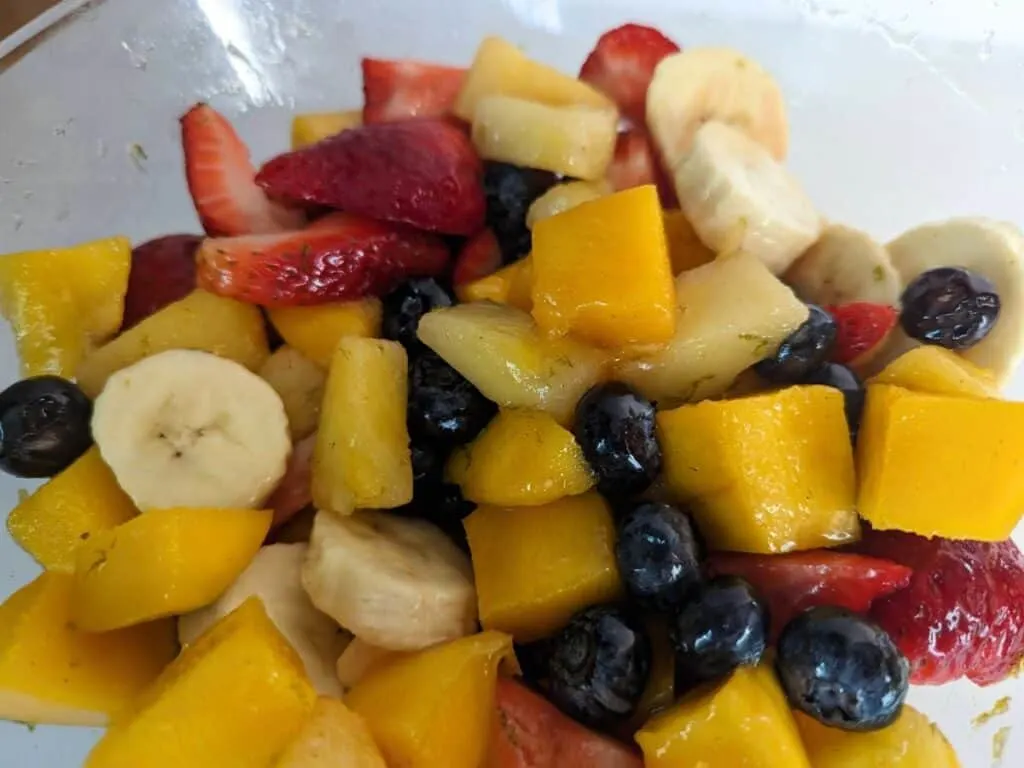
Why fresh lime juice is better
When it comes to adding that tangy punch to your tropical fruit salad, fresh lime juice is a game-changer.
Freshly squeezed lime juice offers a bright and vibrant flavor that cannot be replicated by bottled lime juice. Fresh lime juice is rich in vitamin C and other essential nutrients that contribute to a healthy immune system.
Besides, you need the lime zest in the glaze, so you may as well purchase a lime and use it.
How to zest a lime
Zest is the green skin on the lime. It has fantastic citrus oils that add a burst of flavor that really helps make this dish.
However, just below the green is the white pith. This is bitter, and you do not want to include it in your tropical fruit salad.
Pro tip: Invest in a microplane zester. This tool lasts forever and work equally well for everything from zesting citrus to grating nutmeg to shredding hard cheeses like parmesan.
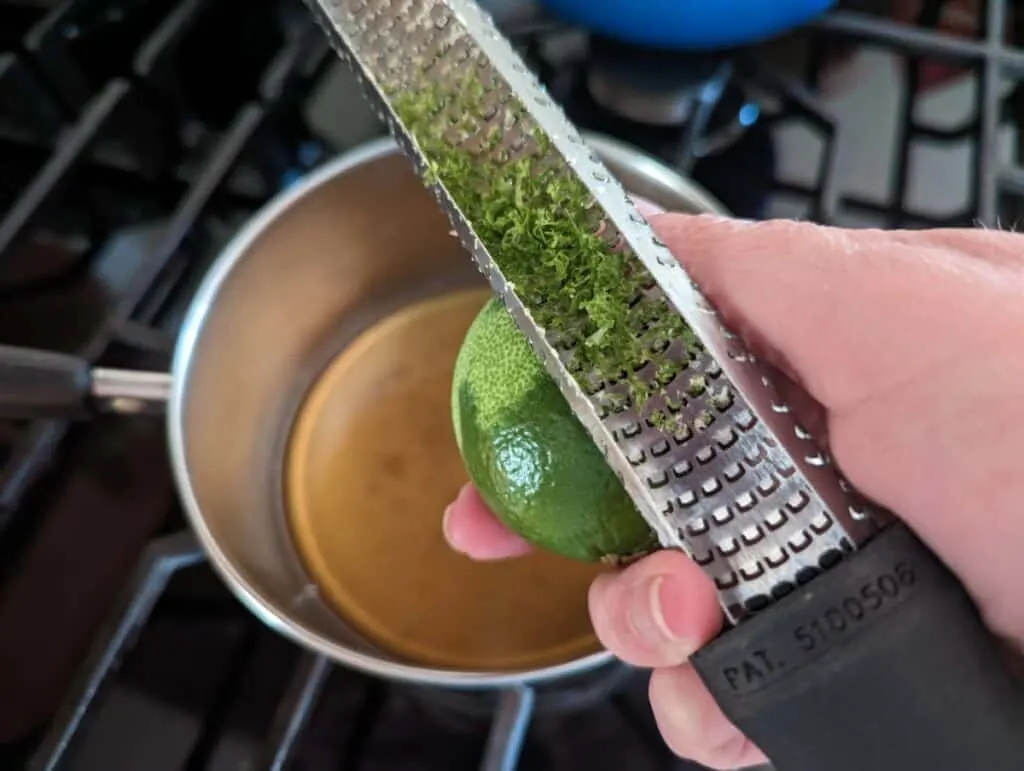
After you wash your lime to remove any dirt or wax, use a zester or grater to gently rub the lime against the tool’s rough surface. Move the lime around to ensure you only remove the outer green layer.
Collect the grated zest from the zester or grater, making sure not to press too hard and extract the bitter pith.
Do this before you juice the lime, as it’s far easier to zest it when the lime is still whole.
Can I make this ahead of time?
You can make this tropical fruit salad a few hours before serving it, but like all fruit salads, the sooner you eat it after making it, the better.
It has staying power if you make it in the morning and are eating it that night. After that, the fruit gets softer so doesn’t look as pretty, but it still tastes good. That puts it firmly in the camp of serve to family, not company type food.
Fortunately, this is such an easy recipe and comes together quickly, so you can pull it together just before serving. You can also make the lemon glaze in advance and keep it in your fridge until you are ready to put the salad together.
Tropical Fruit Salad ingredients
To make this recipe, you’ll need:
- Pineapple
- Mangoes
- Banana (mostly green)
- Blueberries
- Strawberries
- Honey
- Lime
- Cinnamon
You can substitute fruits or add others if you want to change it up. You can find some of my suggestions of what to add in an earlier section.
How to Make a Tropical Fruit Salad
Wash and dry your strawberries and blueberries well. You want them fully dry, which will help them retain their texture in the salad.
In a small saucepan, add the honey. Zest your lime into the honey and turn the heat on medium low.
Juice the lime into the honey, and add the cinnamon. Heat just until the honey is thinned enough to incorporate the lime juice and cinnamon.
Again, the right tool makes a huge difference. If you don’t own a citrus juicer, pick one up; they aren’t expensive and last forever.
Turn off the heat and let cool while you prepare your fruit. Do not add this to the fruit while hot, as this will soften and cook the fruit.
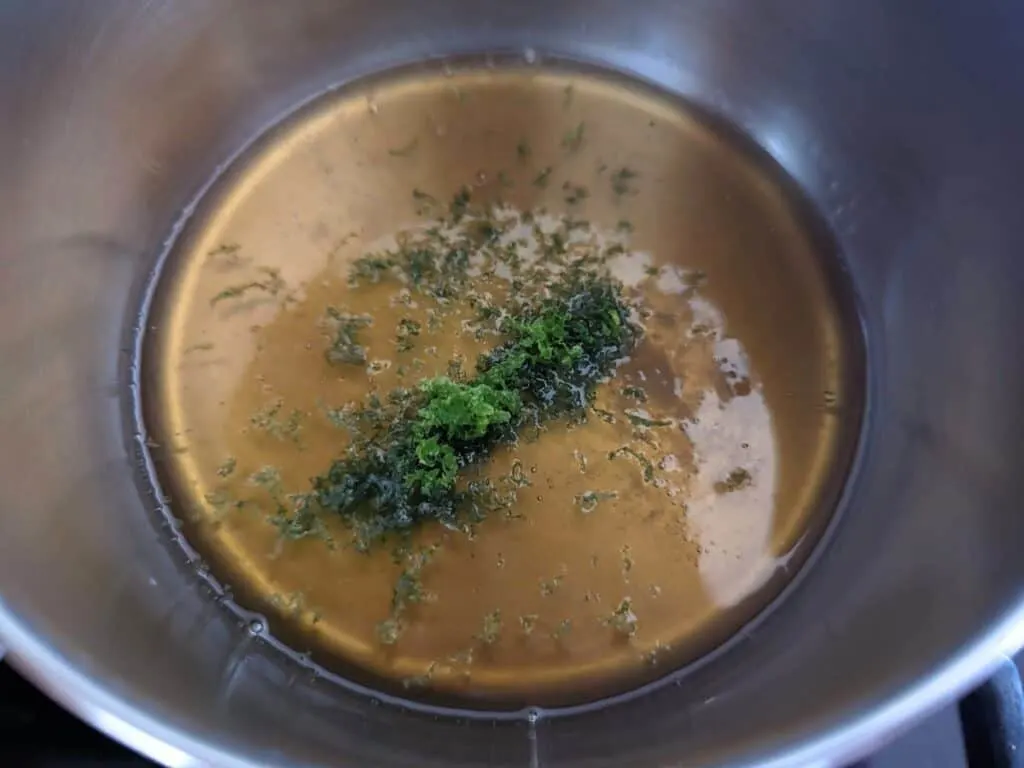
Peel your mangoes with a vegetable peeler, and slice them into good size chunks. Discard the pit in the middle.
Cut your pineapple into chunks about the same size. This recipe needs about a quarter of a large or half of a smaller pineapple.
Save your extra pineapple to make grilled fruit kebabs or to dip in homemade chocolate fondue.
Hull your strawberries with a tomato shark (my other absolutely favorite tool) and cut them into quarters lengthwise. Peel and slice your banana, and add all your ingredients into a bowl.
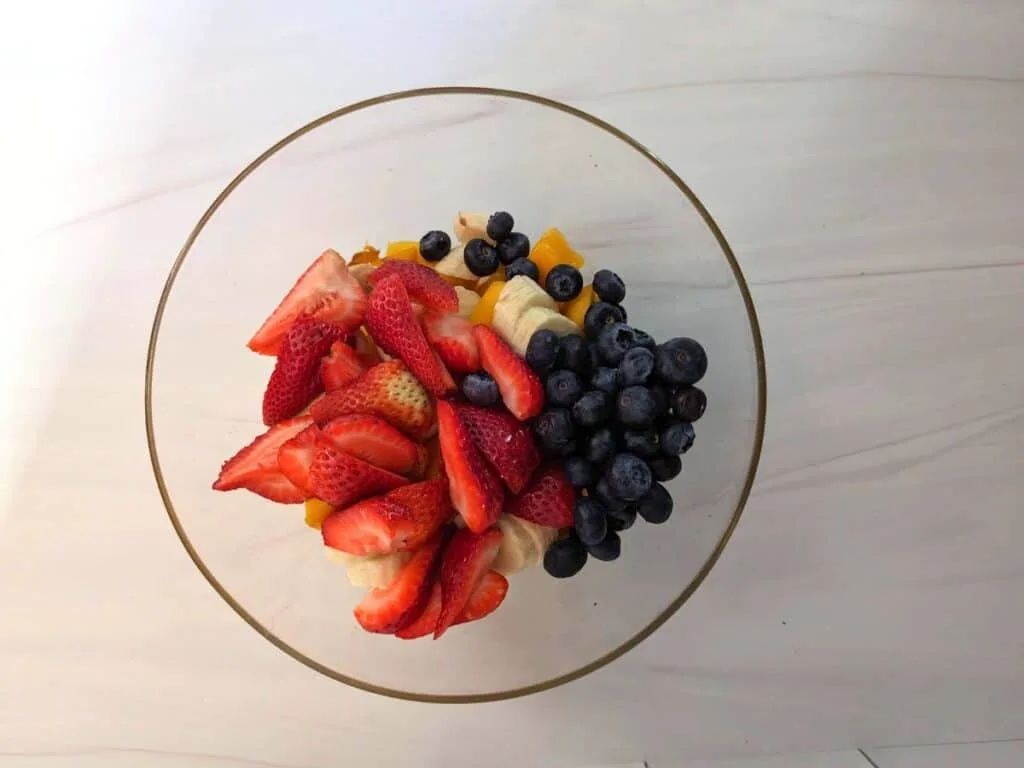
Add the cooled honey and lime mixture, and toss gently to coat. Serve immediately, or refrigerate for up to four hours before serving.
Bookmark this tropical fruit salad recipe so you can make it again
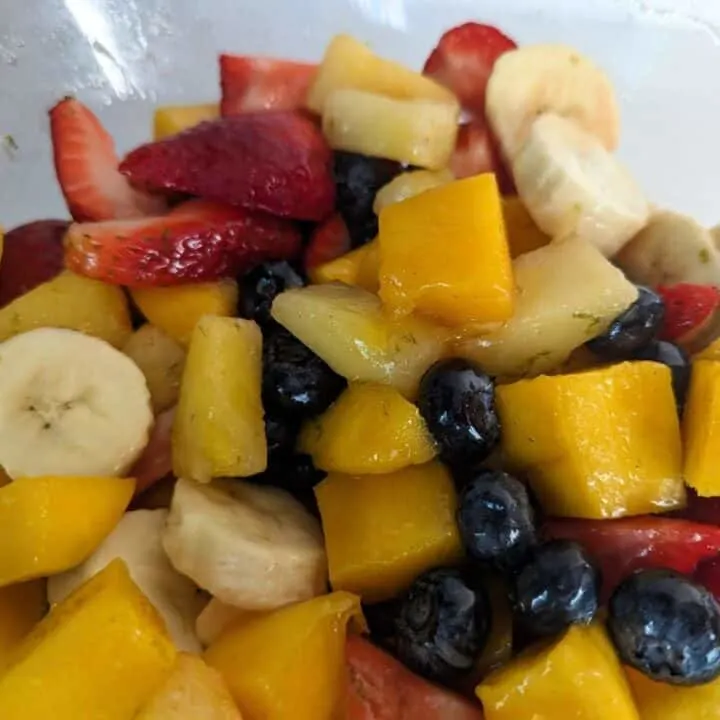
Tropical Fruit Salad
An easy summer salad that has a light glaze that wakes up the fruit and helps make it just a little something special.
Ingredients
- 2 cups pineapple
- 2 mangoes
- 1 banana (mostly green)
- 3/4 cup blueberries
- 1 cup strawberries
- 1/4 cup honey
- 1 lime
- 1/2 teaspoon cinnamon
Instructions
- Wash and dry strawberries and blueberries, then set aside.
- In a small saucepan, add honey and lime zest. Turn heat to medium-low. Juice lime into honey, and add cinnamon.
- Heat just until honey thins enough to incorporate lime juice and cinnamon. Turn off heat and let cool.
- Peel mangoes and cut into chunks. Do the same for your pineapple. Hull strawberries and cut into quarters lengthwise. Peel and slice banana, and add all ingredients to a bowl.
- Add cooled honey and lime mixture, and toss gently to coat.
- Serve immediately, or refrigerate for up to four hours before serving.
Notes
- This salad can easily be scaled up or down to suit your needs.
- When making it, use a fairly green banana, as it will ripen in the salad and using a more unripe banana will keep it from becoming overly sweet and mushy.
- For more tips and hints, be sure to read the full article.
Recommended Products
As an Amazon Associate and member of other affiliate programs, I earn a commission from qualifying purchases.
Nutrition Information:
Yield: 8 Serving Size: 1 servingAmount Per Serving: Calories: 134Total Fat: 1gSaturated Fat: 0gTrans Fat: 0gUnsaturated Fat: 0gCholesterol: 0mgSodium: 2mgCarbohydrates: 35gFiber: 3gSugar: 29gProtein: 1g
This site uses an outside source to provide nutrition. If you need exact details, please calculate yourself.
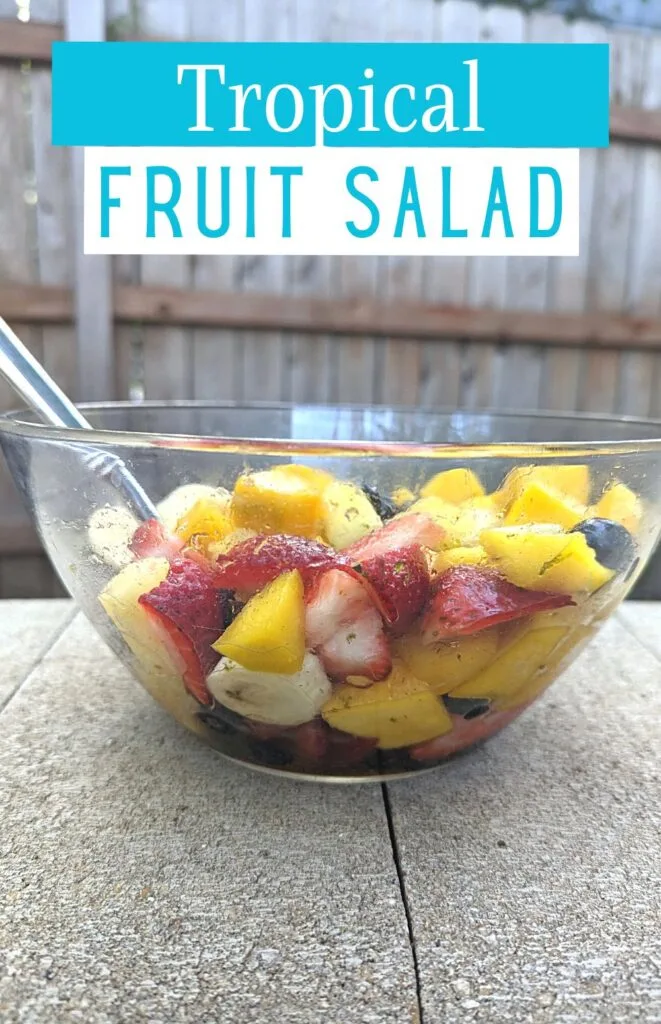
I am a participant in the Amazon Services LLC Associates Program, an affiliate advertising program designed to provide a means for sites to earn advertising fees by advertising and linking to Amazon.com.


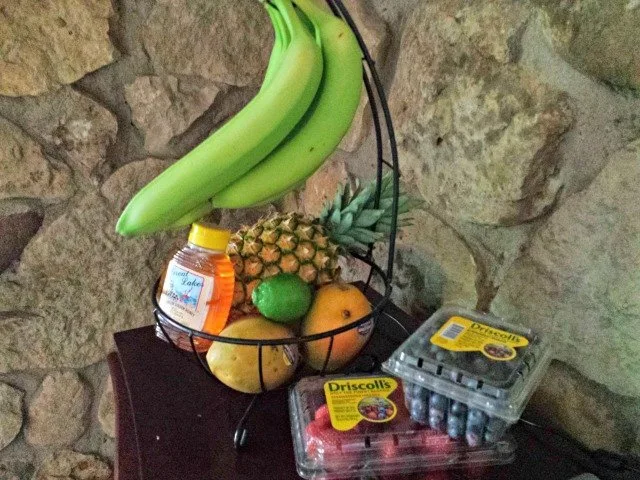



This recipe screams summer! I will definitely be trying this soon! Great recipe!
Thanks, Julie! It was so tasty, and we are planning to make it for any gathering where I’m assigned fruit! It was amazing how fast it disappeared 🙂 Thanks!